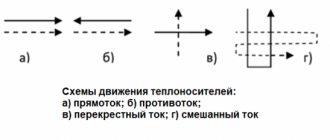Created: November 04, 2020
Very often, when asking for the selection of equipment or when choosing a solar power plant, clients ask the question: How to calculate the power and number of solar panels and batteries and what power to choose a solar power plant. In this article we will try to deal with this issue, and I will try to explain in simple language, without going into detail, how to do this.
First of all, you need to find out how much electricity you consume per day , this can be done by taking the average monthly electricity meter readings and dividing by 30 days. This way we get the average consumption per day. For example, the social norm in the region for two people is 234 kW, which is about 8 kWh of electricity per day. Accordingly, we need solar panels to produce the same amount of energy per day.
Calculation of the number of solar panels and their power
Since solar panels generate electrical energy only during daylight hours , this must be taken into account first of all; it is also worth understanding that production on cloudy days and in winter is greatly reduced, and can amount to 10-30 percent of the panels’ power. For simplicity and convenience, we will make calculations from April to October; according to the time of day, the main generation occurs from 9 a.m. to 5 p.m., i.e. 7-8 hours a day . In the summer, the intervals will of course be longer, from sunrise to sunset, but during these hours the output will be significantly less than nominal, so we average.
So 4 solar panels with a power of 250W. (total 1000W). 8 kWh of energy will be generated per day, i.e. per month it is 240 kWh. But this is an ideal calculation, as we said above, on cloudy days the output will be less, so it is better to take 70% of the output, 240 * 0.7 = 168 kWh. This is an average calculation without losses in the inverter and batteries. This value can also be used to calculate a network solar power plant where batteries are not used.
conclusions
It is not easy to perform an independent calculation of a solar station. The participation of an experienced specialist or an order to carry out design work in a specialized organization is required. However, there is a completely simple and free option - calculating a solar power plant for a home online. A solar power plant calculator is used, of which there are many on the Internet. To get the result, you just need to insert your data into the appropriate windows of the program and get the result almost instantly. It is recommended to duplicate the calculation a couple of times on other sites in order to use the average value.
Calculation of batteries for a solar power plant
Next, let's move on to calculating the battery capacity for solar panels. Their quantity and capacity should be such that the energy stored in them is enough for the dark time of the day; it is worth considering that at night electricity consumption is minimal compared to daytime activity.
100Ah battery stores approximately 100A * 12V = 1200W. (a 100W light bulb will work from such a battery for 12 hours). So if you consume 2.4 kWh per night. electricity, then you need to install 2 batteries of 100Ah each. (12V), but here it is worth considering that it is not advisable to discharge the batteries to 100%, but it is better not more than 70% -50%. Based on this, we find that 2 batteries of 100Ah each. will store 2400 * 0.7 = 1700Wh. This is true when discharging with small currents; when connecting powerful consumers, a voltage drop occurs and the capacity actually decreases.
If you want to calculate what battery capacity is needed for a solar battery, below is the correspondence table (for a 12V system):
- Solar battery 50W. — Battery 20-40Ah.
- 100W. — 50-70Ah.
- 150W. — 70-100Ah.
- 200W. — 100-130Ah.
- 300W. — 150-250Ah.
Determining the cost of the system
It is impossible to say exactly how much solar panels will cost you along with the necessary technical equipment and installation. Since today there are a huge number of companies on the market that offer various panels both in terms of quality and power, warranty periods, and additional characteristics. There are even similar options in their parameters, but the price will be different. Therefore, evaluate all factors together and choose trusted suppliers. On average, the cost of a 1 kW battery is somewhere around 70,000 rubles. But if you need to buy not one panel, but several, then you can safely count on a discount or free shipping.
In addition to the costs associated with the purchase of solar panels, you will definitely need to purchase other elements of the system, namely: a specialized battery, an inverter and a high-quality controller. For example, a powerful 12V and 200Ah battery will cost about 20,000 rubles. There are also more expensive ones, which have a long service life of more than 10 years. As an alternative, you can buy a car battery, its price will be much lower, but it cannot be used in residential buildings, and they do not last long, usually no more than 5 years.
And, of course, you can’t do without an inverter. With the help of an inverter, direct current from the solar battery is converted into alternating current with a voltage of 220V, which we use for our domestic needs. Inverters also differ in design, technical characteristics, manufacturers and warranty period. Sinusoidal ones are considered the best. Their price ranges from 13,000 to 20,000 rubles. Therefore, you can calculate the total cost of installing a solar system only based on your needs, financial capabilities and quality of equipment.
Inverter power and losses in it
Now, as for the inverter, it also has its own efficiency and this is about 75-90%, i.e. all obtained values of energy production and reserve can be attributed to these percentages. As a result, it is better to take a double supply of capacity for batteries. So, when consuming 2400Wh per night, install 4 batteries with a capacity of 100Ah. 100A*12V*4 = 4800Wh. The inverter power shows the rated load that can be connected to it , i.e. the number and type of household appliances.
As a result, we get a 2.5 kW solar power plant:
- Solar batteries 4 pcs. 250W each. Output per month 170 -240 kWh (36 thousand rubles)
- Battery 100Ah. 4 things. reserve up to 4800 W. (AGM batteries 50 thousand rubles)
- Inverter 2.4 kW rated power of connected equipment (27 thousand)
Total 113 thousand rubles. for a set of equipment.
What to do
Of the 1,500 people surveyed, more than 1,000 experts called for better statistics in data collection and processing, better supervision by bosses, and more rigorous experimental design.
Question: What factors will help improve reproducibility?
Answers (from top to bottom): –Better understanding of statistics –More rigorous supervision –Improved design of experiments –Training –Intra-laboratory verification –Improved practical skills –Incentives for formal cross-checking of data –Inter-laboratory verification –Allocating more time to project management –Increasing standards of scientific journals – Allocating more time to work with laboratory notes
Conclusion and some personal experience
Secondly, the article is silent (or rather, not considered) the role of scientific metrics and peer-reviewed scientific journals in the emergence and development of the problem of irreproducibility of research results. In the pursuit of speed and frequency of publications (read: increasing citation indices), the quality drops sharply and there is no time left for additional verification of the results.
As they say, all the characters are fictitious, but based on real events. One student once had the opportunity to review an article, because not every professor has the time and energy to thoughtfully read articles, so the opinions of 2-3-4 students and doctors are collected, from which the review is formed. A review was written, which pointed out the irreproducibility of the results using the method described in the article. This was clearly demonstrated to the professor. But in order not to spoil relations with “colleagues” - after all, everything works out for them - the review was “corrected”. And 2 or 3 such articles were published.
It turns out to be a vicious circle. The scientist sends the article to the editor of the journal, where he indicates the “desired” and, most importantly, “unwanted” reviewers, that is, in fact, leaving only those who are positively disposed towards the team of authors. They review the work, but cannot “crap in the comments” and try to choose the lesser of two evils - here is a list of questions that need to be answered, and then we will publish the article.
PS: The article was translated and written in haste, please write to me about any errors and inaccuracies noticed.
Power of household appliances, electricity consumption
Now, as for consumers and their power, here are the main ones:
- Led TV – 50-150W.
- Class A refrigerator – 100-300W. (only while the compressor is running)
- Laptop – 20-50W
- Energy saving lamp – 30W , LED 3-9W
- Wall-mounted boiler (electronics + built-in pump) – 70-130W.
- Router – 10-20W.
- Air conditioner 9 – 700-900W.
- Email Kettle – 1500W.
- Microwave – 500-700W.
- Washing machine – 600 – 900W.
- DVR + 4 cameras – 30-50W.
All powers are indicated per hour of operation of the device , it is worth considering that most devices operate for a short time, the kettle heats up for 5 minutes, the refrigerator turns on once every 2-3 hours for an hour to maintain the temp. The boiler pump also works as the coolant temperature is maintained. You can also calculate other devices using this principle.
Each sandpiper praises its swamp
Although 52% of respondents point to a reproducibility crisis in science, less than 31% believe published data is fundamentally incorrect and the majority indicated that they still trust published work.
Question: Is there a reproducibility crisis?
Of course, you shouldn’t lash out and lynch all of science as such just on the basis of this survey: half of the respondents were still scientists associated, in one way or another, with biological disciplines. As the authors note, in physics and chemistry the level of reproducibility and confidence in the results obtained is much higher (see graph below), but still not 100%. But in medicine, things are very bad compared to the rest.
A joke comes to mind:
Marcus Munafo, a biological psychologist at the University of Bristol, England, has a long-standing interest in the problem of reproducibility of scientific data. Recalling the times of his student youth, he says:
Question: How much of the already published work in your field is reproducible?
Latitude and longitude depth of the problem
Imagine that you are a scientist. You come across an interesting article, but the results/experiments cannot be reproduced in the laboratory. It is logical to write about this to the authors of the original article, ask for advice and ask clarifying questions. According to the survey, less than 20% have done this at any time in their scientific career!
The authors of the study note that perhaps such contacts and conversations are too difficult for the scientists themselves, because they reveal their incompetence and failure in certain issues or reveal too many details of the current project.
Moreover, a vast minority of scientists have attempted to publish refutations of irreproducible results, but have faced opposition from editors and reviewers to downplay comparisons with the original study. Is it any wonder that the chance of reporting the irreproducibility of scientific results is about 50%.
First question: Have you tried to reproduce the results of the experiment?
Second question: Have you tried to publish your attempt to reproduce the results?
Maybe then it’s worth at least checking reproducibility inside the laboratory? The saddest thing is that a third of respondents have NEVER even thought about creating methods for checking data for reproducibility. Only 40% indicated that they regularly use such techniques.
Question: Have you ever developed special techniques/technical processes to improve the reproducibility of results?
In another example, a biochemist in the United Kingdom who did not want to be named says that trying to replicate work for her lab project simply doubles the time and cost without adding anything new to the work. Additional checks are carried out only for innovative projects and unusual results.
And of course, the eternal Russian questions that began to torture our foreign colleagues: who is to blame and what to do?











